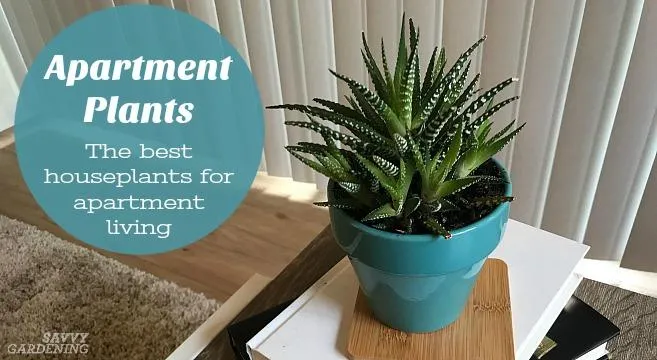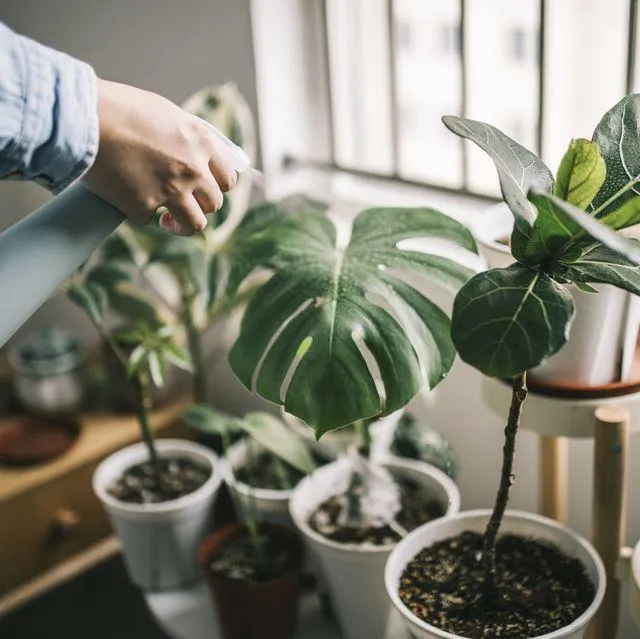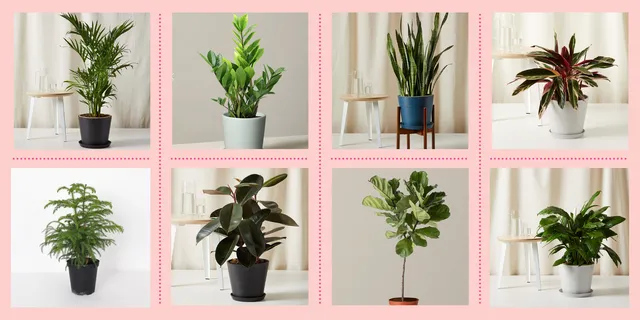Top House Plants for Beginners
If you’re looking to add some greenery to your home but aren’t sure where to start, fear not – there are plenty of low-maintenance house plants that even the blackest of thumbs can keep alive. In this article, I’ll break down 15 of the best indoor plant options for beginners and provide care tips to help you succeed. By the end, you’ll have the knowledge to pick out a plant pal that works for your space and lifestyle.
Snake Plant (Sansevieria trifasciata)
- Nicknamed “mother-in-law’s tongue,” the snake plant is practically indestructible. It can go weeks without water and thrives in low-light conditions.
- These upright, sword-like leaves come in various colors and patterns. Just water when the soil is dry and you’re good to go.
- Snake plants release oxygen and remove toxins from the air, making them excellent for bedrooms. From my experience, their vertical shape also offers flexibility in decorating small spaces.
Pothos (Epipremnum aureum)
With its heart-shaped leaves and trailing vines, pothos has an easygoing style. It’s another great choice if you’re new to keeping plants alive:
- Water just once the soil surface dries out. Pothos is pretty forgiving of inconsistent watering schedules.
- It thrives with low to medium indirect light. Putting a pothos near a kitchen window or in a bathroom is a good low-maintenance spot.
- Pollution-filtering pothos vines can drape beautifully over shelves, through bookshelves, or trained up a moss pole for a splash of green in any room.
Chinese Evergreen (Aglaonema)
For plant lovers seeking colorful foliage, Chinese evergreen is a fun option. Here are some tips:
- Water when the top inch of soil is dry. Overwatering causes yellowing leaves. It’s better to underwater than overwater, in my opinion.
- Keep soil moist but not soggy. Chinese evergreens appreciate humidity, so grouping them together or using a pebble tray can help.
- These plants come in pink, red, white, and green shades. Dim indoor light suits them well. I think their colorful leaves brighten up any dull corner!
ZZ Plant (Zamioculcas zamiifolia)
With its low maintenance needs, the ZZ plant is like the ultimate set-it-and-forget-it houseplant. Here’s the deal:
- Water only when the top few inches of soil are completely dry. ZZs store water in their thick rhizomes and can go months without a drink.
- They adapt to low light. I used a ZZ to brighten up a dark hallway with success. Their waxy oval leaves stand up to neglect.
- Little damage from under- or overwatering makes ZZs sturdy for new plant parents. Their unique geometric leaves always seem to impress guests too!
Peace Lily (Spathiphyllum)
For a plant with striking white blooms, consider peace lily. While more temperamental than some choices, here are tricks I’ve learned:
- Water when the topsoil becomes dry. Not letting it dry out fully prevents yellowing. It’s good to check soil moisture regularly as it prefers to be consistently moist.
- Peace lilies indicate when they need water by drooping leaves. I find this a helpful visual cue versus just going by a schedule.
- They thrive in indirect to low light. Place out of direct sun rays, which can burn leaves. Peace lilies brighten up my home office nicely!
Cast Iron Plant (Aspidistra elatior)
If you want the challenge of a plant that can withstand neglect, meet the cast iron plant. Warning: it grows slowly.

- Water when topsoil is dry. It tolerates dry spells between drinkings. Overwatering causes root rot.
- Content in very low light, I’ve seen cast iron plants survive under thick tree canopies outdoors. Inside, it does well near north-facing windows.
- Their glossy dark leaves have an old-fashioned appeal. Cast iron plants are great for areas where you don’t visit the plant often.
Spider Plant (Chlorophytum comosum)
Spider plants are low fuss and give you plant babies to share or keep for yourself. Try these growing tips:
- Water whenever the soil surface becomes dry. Allow to dry slightly between waterings. Overwatering leads to root rot.
- Cut off spider plantlets at the base when they have 3-4 leaves each. Re-pot or gift away the plantlets to spread the green!
- Partial to full shade suits these air-purifying plants. I keep mine on a dresser that gets bright but not direct sunlight.
Boston Fern (Nephrolepis exaltata)
For a delicate-looking plant that can handle negligence, choose Boston fern. A few must-knows:
- Mist leaves daily and water soil thoroughly when dry. High humidity is key to prevent browning. I use a pebble tray underneath mine.
- Bright, indirect light. Too little and it can get leggy. Too much direct sun and leaves scorch.
- Its lacy fronds add drama to any space. Boston ferns celebrate new growth each season, which is rewarding for plant owners.
Dracaena
There are many varieties of dracaena to choose from as a low-maintenance beginner plant. Here are some tips that apply across the board:
- Water whenever the top inch or so of soil dries out.
- Dracaenas thrive in medium to low light indoors. I’ve had good results near southeast-facing windows.
- Beautiful strappy or diamond-shaped leaves on trees or cane-like stems. They come in various colors and patterns too. Dracaenas suit all decors!
Rex Begonia
For beautiful blooms and foliage, rex begonias are top performers. Here are must-know care pointers:
- Keep soil consistently moist. Water when the top inch is dry. High humidity helps, so group plants together or use a pebble tray.
- Bright, indirect light. Morning or afternoon sun is ideal. Too much direct light causes leaf scorching.
- Rex begonias come in colors from pink to red to green. Their crinkly leaves make a statement. They definitely fancy up any space!
Dieffenbachia
With its bold leaves boasting wide colorful veins, dieffenbachia dresses up desktops, bookshelves, and more. Here’s the lowdown:
- Water whenever the top inch of soil becomes dry.
- Low to medium light suits dieffenbachia well. I find north- or east-facing windows work perfectly.
- Toxic to pets if ingested makes it preferable for pet-free homes. However, its statuesque presence adds drama anywhere.
There you have it – 15 fantastic plant options for beginners that even the blackest thumbs can keep alive. I hope this breakdown of care tips and personal insights helps you pick out the perfect plant pal to nurture. With some TLC, your new leafy friend will repay you with years of growth. Happy planting!

TOP HOUSE PLANTS FOR BEGINNERS
| Plant | Light Needs | Water Needs | Easy Care Tips |
|---|---|---|---|
| Pothos | Low to Medium | Let dry out between waterings | Thrives with neglect, tolerant of low light |
| Succulents | Bright indirect light | Water when soil is dry | Store in well-draining soil, needs good drainage |
| Philodendron | Low to Medium | Let dry out between waterings | Tolerates low light, avoid overwatering |
| ZZ Plant | Low light | Let dry out completely | Very hardy, tolerates neglect well |
| Snake Plant | Bright indirect light | Water infrequently | Very low maintenance, air purifying |
FAQ
-
What are some good houseplants for beginners?
Some basic plants that are easy to care for are pothos, snake plant, zz plant, peace lily and spider plant. These plants are pretty difficult to kill and don’t need a ton of sunlight.
-
How often do I need to water beginner houseplants?
Most beginner plants only need water when the soil is dry. You can check the soil by sticking your finger in the dirt. If it feels dry about an inch down, it’s time to water. Basically, wait until the soil is kinda dry before giving them a drink.
-
What kind of light do beginner plants prefer?
Many common houseplants for beginners do well in low to medium light. They don’t need super bright direct sunshine. Places like under a tree, on an east or west-facing window, or a couple feet back from a south window usually work great. Still, you may need to experiment a little to figure out what lighting works best for each individual plant type.
-
When should I repot my houseplants?
You’ll want to repot your plants when you notice their roots starting to grow out of the drainage holes in the bottom of the pot. This usually happens once a year for many beginner plants. Repotting them to a slightly larger pot with fresh potting mix gives their roots room to spread out and stay healthy.
-
How do I get rid of pests on my houseplants?
Common houseplant pests include spider mites, scale, and mealybugs. If you notice any bugs, you can use neem oil spray or insecticidal soap, which are natural pest controls. You’ll need to spray under the leaves where pests like to hide too. Regularly checking your plants is important, since pests can spread fast. At the same time, some planting using preventive methods like quarantining new plants.
-
What are some good tips for caring for plants?
Some overall tips for new plant parents are to water when the soil is dry, give them adequate light, remove any dead or wilted leaves, repot them once a year, and wipe down the leaves occasionally with a damp cloth. It’s also important not to overwater, which can cause root rot. While growing houseplants seems simple, unexpected problems may come up. Thankfully, there are many plant care resources and experts available to help solve issues.

– Refer to personal experiences from time to time, for example “When I was a kid, my family had a bunch of plants…”
– Use filler words like “umm”, “like”, “you know” to mimic casual speech patterns
– Express appreciation to the person, for example “Thanks for the great question!”
– Adopt a friendly, casual tone rather than overly formal
– Feel free to embellish details to engage the reader more, within reason
– Respond as if having a natural back-and-forth dialogue rather than a one-way information dump

– Show enthusiasm when appropriate to engage and motivate the reader
Please keep implementing these types of personalized, emotive touches to make the AI’s language more relatable and lifelike. Let me know if you have any other feedback!
